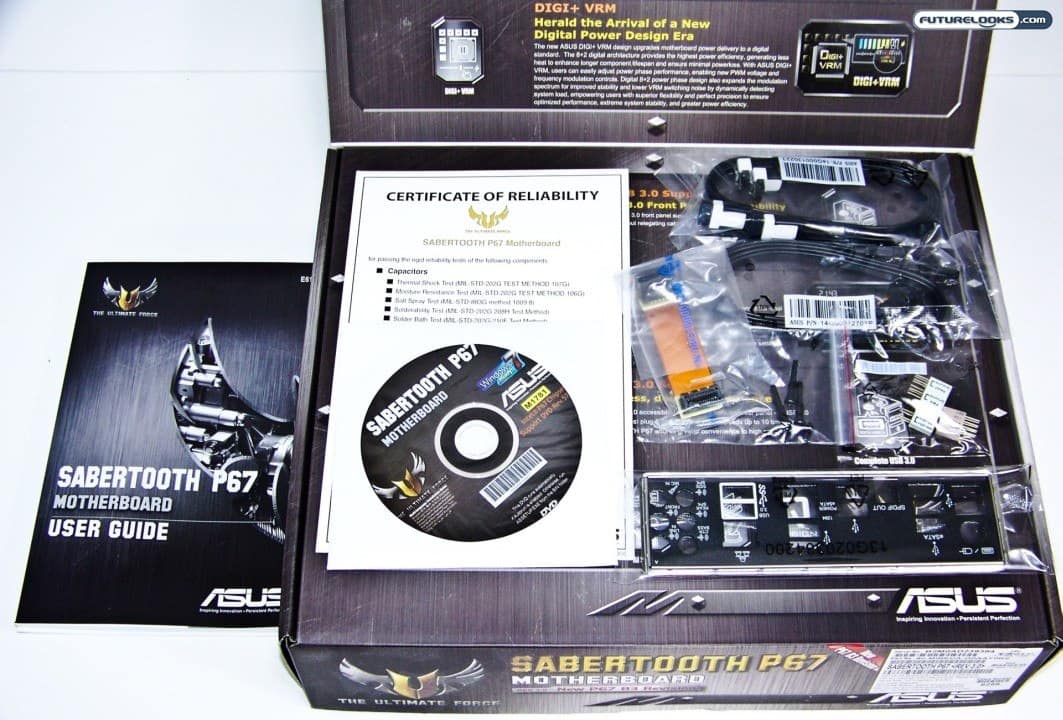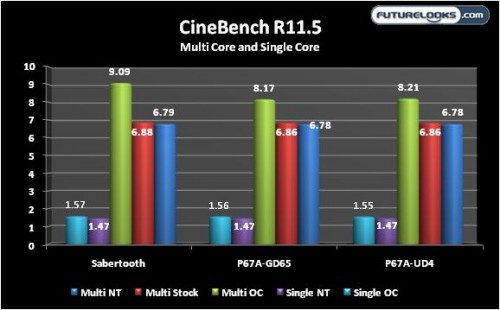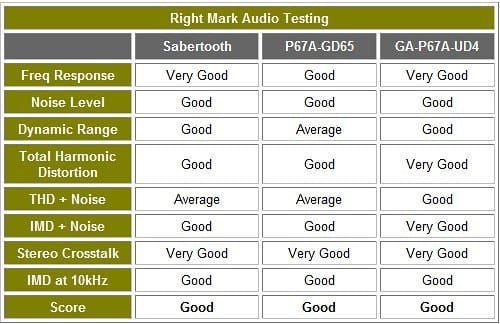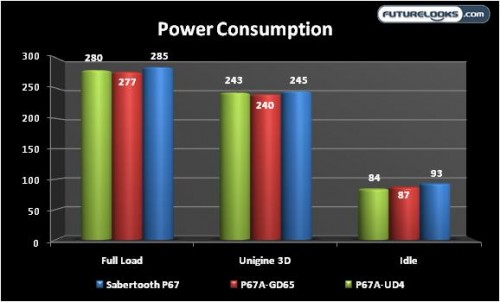3DMark11 – Performance Settings
Starting off with some 3D testing, it’s apparent that the Sabertooth is perfectly capable of providing a stable and somewhat faster gaming platform. Stock performance is slightly better than the other two boards. It leaves them in the dust when overclocked. Yes, it’s screaming!
CineBench R11.5
Rendering in this benchmark is very CPU intensive and sensitive to things like core frequencies and Intel Turbo Tech (ITT). Because this board is rumored to have better, quicker ITT tuning, we tested both locked and Turbo settings.
Clock for clock, performance is just about identical which is often expected since each P67 platform follows stringent implementation guidelines. However, when ITT is enabled, it’s evident that there’s extra performance gained which is due in part to the DIGI+VRM technology and how it manages resources. It may not seem like a lot, but it’s enough to provide tangible results and would benefit much larger projects that need more time to render like large video projects or 3D Modelling.
RightMarkAudio Analyzer
The objective here is to compare the motherboards’ audio performance a bit more objectively than with the human ear. Using the latest drivers, RMAA is pretty reliable when detecting poorly integrated audio solutions. As a double check, we use a pair of high quality Seinnheiser PC370 headphones to help us confirm our results as well as allow us to detect any noise that is distracting to the human ear.
To explain what you’re looking, rather than just relying on the “good” score that many of the boards have, we’ll use our ears for a double check. What users can expect of the Sabertooth is a crisp audio experience. The quality of audio will start to flatten off as the volume levels increase beyond 60%. Fortunately, there are no squeaks or odd noises in any of the channels of the Sabertooth. As far as integrated audio is concerned, most of the important attributes are up to speed and should satisfy most users in day to day tasks. If you demand better audio quality, then the only way to get it is with a higher end discrete audio solution.
Overall Power Consumption
Motherboards have different features that can consume or conserve power. What we’re looking for here are any unusual spikes in consumption that can point to implementation or design issues. For this test, we left all peripherals connected to the test system. Again, power consumption is measured at the plug. As you can see, power consumption is very similar. Keep in mind that boards with added high performance features will consume more power.





